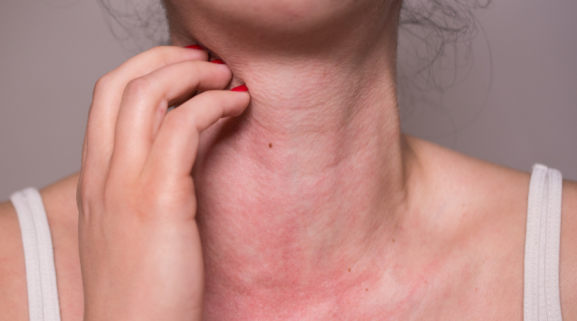What Are Skin Diseases Related To Nutritional And Metabolic Disorders?
What are skin diseases related to nutritional and metabolic disorders?
The skin is the organ that best reflects the body. How the skin looks depends largely on overall body health. The color, texture and appearance of the skin can give clues to some metabolic diseases and nutritional habits.
Problems such as vascular occlusion, kidney and liver diseases, anemia due to cigarette consumption may cause pale or yellowish symptoms on the skin. In some hematological diseases, especially in cases where the number of blood cells is high, rashes that appear suddenly on the skin can be seen.
Eczema is a skin disease that manifests itself with symptoms such as dryness, redness and itching on the skin. Eczema, which has a very close relationship with nutrition, can worsen with the consumption of foods such as eggs, dairy products and nuts. With supplements such as omega-3, vitamin E and zinc, symptoms can be alleviated.
Acne is a skin disorder especially seen in adolescents and adults. It is an infection in oily skin where the sebaceous glands are overactive. Acne can be caused by hormonal changes and diet. Foods containing high fat and sugar are known to trigger acne formation. It is thought that milk and dairy products may be associated with acne formation.
Rosacea is a streak-shaped rash that appears especially on the facial skin. Although the underlying cause is unknown, it is known that spicy foods, tea, coffee and alcohol exacerbate the disease. It will be beneficial to remove these foods from the nutrition program and consume foods rich in omega-3 such as walnuts and salmon. Redness caused by the consumption of these types of foods can also be an indicator of lupus disease.
Diabetes has many symptoms in the body. One of them is the xanthomas observed on the skin. Xanthomas are yellow colored bumps filled with fat. Their size can vary from rice grain to grape grain. It is seen in the hands, feet and especially in the knee and elbow area. It does not cause any pain but it may itch.Xanthomas may occur due to hyperlipidemia in which the level of fat in the blood rises or type 2 diabetes. It may also occur secondary to some metabolic diseases such as hypothyroid disease, cirrhosis and nephrotic syndrome. Since xanthomas are the precursors of a metabolic disease, the underlying cause must be investigated.
Xanthelasma is a disease in which xanthomas appear on the eyelids. It is a fat deposit that appears as a flat layer on the eyelids. It does not cause pain or any visual impairment.High triglyceride and cholesterol levels in the blood, obesity and some metabolic syndromes are risk factors for xanthelasma.,
What are the symptoms? How is it understood?
First of all, the underlying cause of the disease should be determined. It should be determined whether the patient has any food allergies. If it is observed that the body has an allergic reaction to a food, the consumption of that food should be reset. If the disease is directly related to nutrition, the disease will be cured when the consumption of the relevant food is stopped. Skin diseases due to metabolic disorders such as xanthoma and xanthelasma are evaluated with various blood tests. Diagnosis is made by investigating blood sugar, lipid and cholesterol levels and liver functions. When necessary, analysis can be performed by taking a biopsy.
How is it treated? How does the process work?
Treatment of skin diseases is determined by evaluating the cause of the disease. If the disease develops due to a food allergy, this food should be completely removed from the diet.
Local antibiotic creams or systemic antibiotics are generally preferred for acne treatment. Reinforcement creams and special cleansers can be used to prevent skin lubrication with the advice of a doctor. During the treatment process, fatty and sugary foods that will increase the acne problem should be avoided.
Local ointments or systemic corticosteroid drugs can be used in the treatment of eczema. Since it is not necessary to scratch the skin during the treatment process, itching cream can be applied to the area. During and after the healing process, it is necessary to consume plenty of water and moisturize the skin frequently.
Since xanthoma and xanthelasma are indicators of a metabolic disease, treatment should primarily focus on this condition. If diabetes and blood cholesterol levels are controlled, the probability of xanthoma formation is extremely low. Although it does not cause any discomfort on its own, other treatment options may be preferred as it is found to be aesthetically disturbing. Xanthomas can be treated with surgical excision, laser and application of trichloroacetic acid. However, xanthomas may reoccur because these methods do not eliminate the underlying cause of the xanthoma.
Since xanthelasmas are also an indicator of metabolic disease like xanthomas, a treatment plan should be prepared in this regard. Although it does not cause pain or vision problems in the patient, it may disturb the person aesthetically. In this case, cryotherapy, surgical excision, laser therapy, trichlor acetic acid application, electrocautery and radiofrequency treatments can be used. The dermatologist will choose the most appropriate treatment method by evaluating many factors such as the size and number of lesions, aesthetic appearance and healing process.



